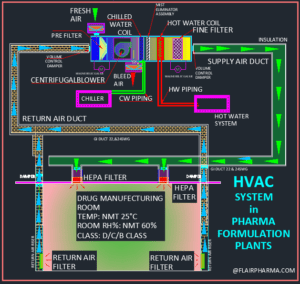Air pollution is a growing concern, so air cleaners and air purifiers are used for air quality indoors is just as critical as outdoors. Two common solutions for enhancing indoor air quality are air cleaners and air purifiers. While both aim to improve the air we breathe, their mechanisms, effectiveness, and applications differ significantly. Let us explore the distinctions between these two technologies and determine which might be the better choice for your needs.

Key Differences Between Air Cleaners and Air Purifiers
1. Filtration Rate
Filtration is the process of removing air-borne toxicants.
- Air Purifiers: Employ automatic sanitizers that trap toxic substances, including pathogens and harmful particles. These sanitizers typically require less frequent maintenance.
- Air Cleaners: Use mechanical air filters to trap particulate matter. These filters need to be replaced approximately every six months, which can increase maintenance efforts. Some air purifiers also use mechanical filters, but this is not their primary mechanism.
Advantage: Air purifiers, with their advanced sanitization mechanisms, offer a higher filtration rate and require less frequent upkeep compared to air cleaners.
2. Removal of Air-Borne Pathogens
Pathogens in the air, such as bacteria and viruses, can pose serious health risks.
- Air Purifiers: Effectively eliminate or neutralize pathogens, making the air safer to breathe.
- Air Cleaners: Primarily target larger particles like dust and dander but are less effective against microscopic pathogens.
Advantage: Air purifiers are the preferred choice for combating air-borne pathogens.
3. Cleaning Dust and Particulate Matter
Dust and particulate matter are prevalent indoor pollutants that impact respiratory health.
- Air Cleaners: Designed to trap dust, dander, and dead skin cells, ensuring dust-free air.
- Air Purifiers: Lack specialized mechanisms for dust removal and may occasionally release dust-laden air back into the environment.
Advantage: Air cleaners excel in removing visible dust and particulate matter.
4. Cost-Effectiveness
Cost and maintenance are significant factors when choosing an air quality device.
- Air Purifiers: Generally easier to handle with lower maintenance costs.
- Air Cleaners: Require more frequent maintenance and tend to be costlier in the long run.
Advantage: Air purifiers are more budget-friendly and user-friendly.
5. Additional Features
The design and functionality of each device vary.
- Air Purifiers: Operate quietly since they lack additional fans, making them suitable for noise-sensitive environments.
- Air Cleaners: Equipped with fans for enhanced air circulation, but this often results in noise pollution.
Advantage: For quiet operation, air purifiers are the better option.
6. Area Coverage
Coverage area is a crucial consideration when choosing between the two.
- Air Purifiers: Primarily designed for room-specific use, providing clean air in confined spaces.
- Air Cleaners: Cover larger areas, such as entire homes or offices, ensuring widespread filtration.
Advantage: Air cleaners are ideal for larger spaces, while air purifiers are suitable for single-room applications.
7. Air Circulation
Airflow dynamics play a vital role in effective air filtration.
- Air Cleaners: Use built-in fans for improved air circulation, ensuring consistent filtration throughout the space.
- Air Purifiers: Lack active air circulation mechanisms, relying instead on passive airflow.
Advantage: Air cleaners have an edge in enhancing air circulation.

Room Purifiers vs. Home Purifiers
Another distinction lies within air purifiers themselves, classified into room and home purifiers:
- Room Purifiers: Compact and efficient for smaller spaces but may have a lower capacity for eliminating toxic substances.
- Home Purifiers: Designed for broader coverage and higher filtration capacities.
What Makes an Ideal Air Purification System?
An ideal air purification system combines the strengths of both air cleaners and air purifiers. For instance, a hybrid system could include mechanical filters for particulate matter and UV lamps to neutralize pathogens. This comprehensive approach ensures optimal indoor air quality for health and well-being.
Technical Specifications of Air Cleaners and Air Purifiers
Below is a detailed table comparing the technical specifications of air cleaners and air purifiers:
| Specification | Air Cleaners | Air Purifiers |
|---|
| Filtration Mechanism | Mechanical filters (HEPA, carbon filters) | Automatic sanitizers (UV lamps, ionizers, or HEPA filters) |
| Particle Size Efficiency | Effective for particles as small as 0.3 microns (with HEPA filters) | Removes particles as small as 0.1 microns; efficient against pathogens and VOCs |
| Pathogen Removal | Limited; primarily targets dust and dander | Effectively eliminates bacteria, viruses, and other pathogens |
| Dust Removal | High; specifically designed for dust and particulate matter | Moderate; may release some dust-laden air |
| Noise Level | Moderate to high due to built-in fans | Low; operates quietly without fans |
| Maintenance | Requires frequent filter replacement (every 3-6 months depending on usage) | Less frequent maintenance; sanitizers last longer |
| Area Coverage | Large; suitable for entire homes or offices | Limited; designed for single rooms |
| Air Circulation | Active, supported by internal fans | Passive; depends on ambient airflow |
| Energy Consumption | Moderate to high; fans consume more power | Low to moderate depending on features (UV lamps may increase power usage) |
| Cost | Higher initial cost; higher long-term maintenance costs | Moderate initial cost; lower maintenance expenses |
| Additional Features | Fan-based circulation; may include odor-neutralizing features | Quiet operation; some models include ionization or ozone generation |
| Weight and Portability | Heavier and bulkier, less portable | Lightweight and portable; ideal for moving between rooms |
| Filter Life Span | 3-6 months (HEPA filters); 6-12 months (carbon filters) | 6-12 months or longer depending on purifier type |

Key Notes
- HEPA Filters: Both air cleaners and some purifiers use HEPA filters to trap fine particles effectively.
- UV Lamps: Exclusive to advanced air purifiers for pathogen removal.
- Noise Levels: Air cleaners are less suitable for noise-sensitive environments due to fan operations.
- Application: Air cleaners excel in large, open spaces, while air purifiers are ideal for specific room needs.
When selecting between the two, consider your specific requirements—whether it’s dust removal, pathogen elimination, or area coverage—to make an informed choice.
Conclusion
Air cleaners and air purifiers serve the shared purpose of improving indoor air quality but differ significantly in their design, capabilities, and applications. While air cleaners excel at removing dust and enhancing air circulation over large spaces, air purifiers are more effective against pathogens and offer quieter, lower-maintenance operation.
Choosing the right device depends on your specific needs. For room-specific air quality improvement, air purifiers are ideal. If you require a solution for larger areas or need enhanced dust removal, air cleaners are better suited. Alternatively, a combination of both can create an ideal air purification system tailored to your environment.
Investing in the right air purification device not only promotes health but also ensures a comfortable and safe living or working space.

Frequently asked questions
What is the difference between an air purifier and an air sanitizer?
- Air Purifier: Removes particles like dust, allergens, and airborne pathogens using HEPA filters, UV lamps, or ionizers.
- Air Sanitizer: Focuses on killing or neutralizing bacteria, viruses, and microorganisms, often using UV technology or chemical disinfectants.
What is the difference between an air purifier and an air freshener?
- Air Purifier: Cleans the air by removing pollutants, allergens, and toxins.
- Air Freshener: Masks odors by releasing fragrances but does not clean or improve air quality.
What is the difference between air purifier and ventilation?
- Air Purifier: Recirculates and cleans indoor air by removing pollutants and pathogens.
- Ventilation: Introduces fresh outdoor air into the indoor environment, diluting indoor air pollutants.
Which is better, air cleaner or air purifier?
- Better Option: Depends on the purpose. Air cleaners are better for removing dust and particulate matter, while air purifiers are superior for eliminating pathogens and allergens.
What are air cleaners called?
- Air cleaners are also referred to as mechanical air filters or dust collectors due to their dust-trapping capabilities.
Do air purifiers clean?
- Yes, air purifiers clean the air by removing pollutants, allergens, and pathogens, making the air healthier to breathe.
What is the difference between an air filter and an air cleaner?
- Air Filter: A component within devices like air cleaners or HVAC systems, designed to trap particles.
- Air Cleaner: A standalone device that incorporates filters and other mechanisms for air purification.
Do air purifiers remove germs?
- Yes, many air purifiers remove or neutralize germs using HEPA filters, UV lamps, or ionization technology.
Is fresh air better than air purifier?
- Fresh air is generally better if outdoor air quality is good. However, in polluted or allergen-rich environments, an air purifier is beneficial for ensuring clean indoor air.
What are the disadvantages of air purifiers?
- High upfront cost.
- Maintenance requirements (e.g., replacing filters).
- Limited coverage area.
- Some models may emit ozone, which can be harmful.
What is the difference between a purifier and a humidifier?
- Air Purifier: Removes airborne pollutants to improve air quality.
- Humidifier: Adds moisture to the air to combat dryness but does not clean the air.
Do air purifiers remove smells?
- Yes, air purifiers with activated carbon filters are effective at removing odors and volatile organic compounds (VOCs).
What’s the difference between an air purifier and a diffuser?
- Air Purifier: Cleans the air by removing pollutants.
- Diffuser: Dispenses essential oils into the air for aromatherapy but does not clean the air.
What is the difference between air freshener and deodorizer?
- Air Freshener: Masks odors with fragrances.
- Deodorizer: Neutralizes odors chemically or biologically but does not clean the air.
Do air fresheners purify air?
- No, air fresheners only mask odors and do not remove pollutants or improve air quality.
What is the difference between an air purifier and a cleaner?
- Air purifiers target microscopic pollutants like allergens and pathogens.
- Air cleaners primarily remove larger particles such as dust and dander.
Does an air purifier work like AC?
- No, an air purifier cleans the air, while an AC regulates temperature and humidity. Some ACs include air purifying functions, but they are not as effective as standalone purifiers.
Is an air purifier good for health?
- Yes, it reduces allergens, pollutants, and pathogens, improving respiratory health and overall air quality.
Can you use an air purifier every day?
- Yes, air purifiers are designed for daily use and are safe to run continuously.
Do air purifiers actually clean the air?
- Yes, they effectively clean air by removing pollutants, allergens, and microorganisms.
What is the advantage of air cleaner?
- Air cleaners are highly effective at removing visible dust, particulate matter, and dander, making them ideal for reducing indoor dust levels.
4 Things to Consider When Choosing an Air Cleaner or Purifier



This blog clearly distinguishes between air cleaners and air purifiers, providing valuable insights into their functions. It helps readers understand the importance of choosing the right device for cleaner indoor air. Excellent!